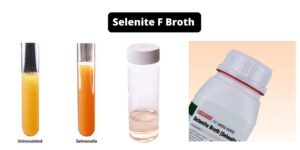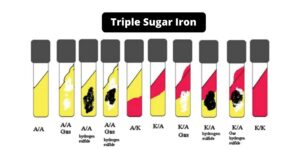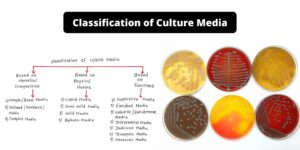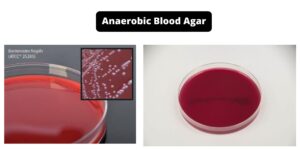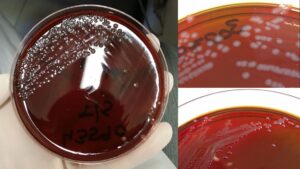What is Lactobacilli MRS Broth?
- Lactobacilli MRS Broth is a specialized growth medium developed by deMan, et al., for the cultivation of lactobacilli. It was designed to support luxuriant growth of lactobacilli strains isolated from various sources, including oral and fecal specimens. This medium provides an improved environment for the growth of lactobacilli, especially for fastidious strains that may grow poorly on other general media.
- The primary purpose of Lactobacilli MRS Broth is for the cultivation of lactobacilli and is not intended for diagnosing diseases or other conditions in humans. It can be used for confirmatory tests on organisms isolated on MRS Agar, another medium commonly used for lactobacilli isolation. Additionally, the broth can be employed for enumeration using the Miles and Misra technique, which is a method for quantifying bacterial populations.
- The nutritional composition of Lactobacilli MRS Broth includes a carefully selected mixture of peptones, glucose, beef and yeast extracts. These components provide essential nutrients to support the growth of lactobacilli. Growth stimulants such as Tween® 80, magnesium sulfate, and manganese sulfate are also present in the medium. These compounds help enhance the growth of lactobacilli.
- To ensure selectivity against streptococci and molds, Lactobacilli MRS Broth contains ammonium citrate and sodium acetate. These additives help suppress the growth of unwanted microorganisms while promoting the growth of lactobacilli.
- It is important to note that in some rare cases, sterilizing the medium at 121°C for 15 minutes in certain autoclaves may cause the pH of the broth to deviate from the specified range of 6.4 +/- 0.2. If this occurs, it is recommended to adjust the pH using acetic acid or sodium hydroxide to bring it back within the specified limits before use.
- Overall, Lactobacilli MRS Broth provides an enriched and selective environment that supports the robust growth of lactobacilli, making it a valuable tool for research, isolation, and enumeration of lactobacilli strains.
Composition of Lactobacilli MRS Broth
| Ingredients | Gms / L |
| Proteose peptone | 10.0 |
| Beef extract | 10.0 |
| Yeast extract | 5.0 |
| Dextrose | 20.0 |
| Polysorbate 80 | 1.0 |
| Ammonium citrate | 2.0 |
| Sodium acetate | 5.0 |
| Magnesium sulphate | 0.1 |
| Manganese sulphate | 0.05 |
| Dipotassium phosphate | 2.0 |
Final pH ( at 25°C) 6.5±0.2
Composition of Lactobacilli MRS Agar
| Ingredients | Gms / L |
| Proteose peptone | 10.0 |
| Beef extract | 10.0 |
| Yeast extract | 5.0 |
| Dextrose | 20.0 |
| Polysorbate 80 | 1.0 |
| Ammonium citrate | 2.0 |
| Sodium acetate | 5.0 |
| Magnesium sulphate | 0.1 |
| Manganese sulphate | 0.05 |
| Dipotassium phosphate | 2.0 |
| Agar | 15g |
Principle of Lactobacilli MRS Broth
Lactobacilli MRS Broth, based on the original formulation developed by de Man, Rogosa & Sharpe in 1960, provides a favorable environment for the growth of lactobacilli and certain other organisms. The broth contains various components that support the nutritional needs of lactobacilli and facilitate their metabolism.
Proteose peptone and beef extract present in the medium serve as sources of nitrogenous and carbonaceous compounds, providing essential nutrients for bacterial growth. Yeast extract supplies the vitamin B complex, which is necessary for the growth and metabolism of lactobacilli. Dextrose acts as a carbohydrate and energy source for the bacteria.
Polysorbate 80, a surfactant, plays a crucial role in Lactobacilli MRS Broth. It aids in the uptake of nutrients by lactobacilli and supplies fatty acids that are required for their metabolism. This surfactant enhances the growth of lactobacilli in the medium.
Lactobacilli MRS Broth is a selective medium that inhibits the overgrowth of contaminating organisms. Sodium acetate, one of the selective agents, suppresses the growth of many competing bacteria, although some other lactobacilli such as Leuconostoc and Pediococcus may still grow. Ammonium citrate, another selective component, inhibits the growth of Streptococci, molds, and various other microorganisms.
The medium also contains magnesium sulfate and manganese sulfate, which provide essential ions used in bacterial metabolism. These ions contribute to the overall growth and physiological activities of lactobacilli.
A positive result in Lactobacilli MRS Broth is indicated by the growth of lactobacilli. The presence of visible bacterial growth confirms that the medium is supportive of lactobacilli proliferation. Additionally, a Durham tube may be incorporated into the broth to differentiate Lactobacillus species from Leuconostoc species based on their gas production.
Overall, Lactobacilli MRS Broth is designed to create a favorable environment for the growth of lactobacilli by providing necessary nutrients, selectivity against competing organisms, and metabolic support.
Intended Use
Lactobacilli MRS Agar, as well as Lactobacilli MRS Broth have been suggested to be used in the isolation, enumeration , and cultivation of Lactobacillus species.
Preparation of Lactobacilli MRS Broth
To prepare Lactobacilli MRS Broth, follow the steps below:
- Suspend 55.15 grams of Lactobacilli MRS Broth powder in 1000 ml of distilled water. Ensure that the powder is evenly dispersed in the water.
- If necessary, heat the mixture while stirring to facilitate the complete dissolution of the medium. Heating can be done using a heating plate or a water bath.
- Once the medium is completely dissolved, distribute it into tubes, bottles, or flasks according to your requirements. Ensure that the containers are sterile and suitable for the intended use.
- Sterilize the prepared Lactobacilli MRS Broth by autoclaving at 15 lbs pressure (121°C) for 15 minutes. Autoclaving ensures the elimination of any potential contaminants and renders the medium suitable for microbiological applications.
After the autoclaving process, the Lactobacilli MRS Broth is ready to use for the cultivation of lactobacilli and other organisms. It provides a nutrient-rich environment that supports the growth of lactobacilli and is particularly useful for fastidious strains that may grow poorly on other general media.
Procedure
To perform the Lactobacilli MRS Broth test, follow the procedure outlined below:
Direct Counts:
- Prepare sterile Petri dishes and sterilize them.
- Add 15-20 mL of sterile, molten Lactobacilli MRS Agar (maintained at a temperature of 45-50°C) to each Petri dish.
- Inoculate the media by adding 1 mL of the dilute test sample to each dish. Rotate the dishes in one direction and then in the reverse direction to ensure even distribution of the sample.
- Allow the medium to solidify on an even surface for 5 to 10 minutes.
- Alternatively, streak inoculation can be used by streaking the dilute test sample directly onto the Lactobacilli MRS Agar plates.
- Incubate the agar plates at 35°C for 3 days, or at 30°C for 5 days, in an aerobic environment supplemented with carbon dioxide.
Broth Enrichment:
- Directly inoculate the samples into Lactobacilli MRS Broth.
- Incubate the broth tubes at 35°C for 3 days, or at 30°C for 5 days, in an aerobic environment.
- After incubation, subculture any growth observed in the broth tubes onto appropriate solid media for further identification and characterization.
The Lactobacilli MRS Broth test allows for the direct counting of lactobacilli using agar plates or enrichment of samples in the broth. Incubation under specific temperature and atmospheric conditions promotes the growth of lactobacilli, which can then be further analyzed using appropriate solid media. This procedure is useful for the detection and enumeration of lactobacilli in various samples.
Result Interpretation of Lactobacilli MRS Broth
When interpreting the results of the Lactobacilli MRS Broth test, consider the following:
- Positive Result: If there is growth observed in the broth and the medium appears turbid, it indicates a positive result. This can be indicative of the presence of lactobacilli, such as Lactobacillus gasseri, in the sample. The growth of lactobacilli in the medium leads to increased turbidity due to their metabolic activities.
- Negative Result: If there is no growth observed in the broth and the medium remains clear, it indicates a negative result. This may occur when the medium is left uninoculated or when the sample does not contain lactobacilli.
Storage and Shelf Life
The dehydrated medium between 2 and 8 degrees Celsius. Make use of the product prior to the expiry date printed indicated on the label. After opening, the product must be stored dry after sealing the bottle tightly in order to prevent the formation of lumps as a result of the highly hygroscopic nature the product. Unproper storage can result in the formation of lumps. Keep the product in a dry, ventilated place safe from extreme temperatures and ignition sources. The container should be sealed tightly following use. It is recommended that the product be utilized within the expiry date.
Quality Control
Lactobacilli MRS Agar
- Dehydrated Appearance: Light tan, free-flowing, homogeneous.
- Solution: 7.0% solution, soluble in purified water upon boiling. Solution is medium amber, clear to slightly opalescent.
- Prepared Appearance: medium amber extremely slightly to somewhat transparent.
- Reaction of 7.0% Solution at 25°C: pH 6.5 ± 0.2
Lactobacilli MRS Broth
- Appearance of Dehydrated: Tan, homogeneous, appears damp.
- Solution 5.5 percent solution which is soluble in purified drinking water upon boiling. Solutions are medium-amber to transparent to somewhat transparent. It is opalescent to very slightly.
- Prepared Appearance: medium amber translucent to slightly opaque.
- Reaction of 5.5% Solution at 25degC: pH 6.5 +- 0.2
Following organisms can be commonly utilized for quality control testing in Anaerobe Systems.
| Organism Tested | Results | Time |
| Lactobacillus vaginalis | Growth | 24 – 48 hrs |
| Lactobacillus acidophilus | Growth | 24 – 48 hrs |
| Lactobacillus crispatus | Growth | 24 – 48 hrs |
| Lactobacillus jensenii | Growth | 24 – 48 hrs |
| Lactobacillus fermentum | Growth | 24 – 48 hrs |
Physical Properties of MRS Broth
- Appearance Color: From yellow to cream. fluid powder
- Color and clarity of the prepared medium: Medium amber colored transparent to slightly transparent solution in tubes
- Reaction: A reaction that occurs in 5.51 percent w/v of aqueous solution at 25°C. pH: 6.5+-0.2
- pH: 6.30-6.70
- Culture Response: The cultural aspects observed following an incubation period of 35-37°C for 18-24 hours or more. (with 5% CO2)Uses of Lactobacilli MRS Broth
- MRS Broth is a medium to cultivate and count of Lactobacillus Spp.
- It aids in the development of all Lactobacilli found in the oral cavity dairy products, food products as well as feces and various other sources.
- It can be used to determine if the organism produces gas when it ferments glucose. Certain Lactobacillus as well as Leuconostoc spp. create gas.
Uses of Lactobacilli MRS Broth
Lactobacilli MRS Broth has several uses in microbiology. These include:
- Cultivation of Lactobacillus spp.: MRS Broth is specifically designed to support the growth and proliferation of Lactobacillus species. It provides a nutrient-rich environment that allows for the luxuriant growth of Lactobacilli obtained from various sources, including the oral cavity, dairy products, foods, and feces.
- Enumeration of Lactobacilli: MRS Broth can be used to enumerate Lactobacilli present in a sample. By inoculating the broth with a known volume of the sample and incubating it under suitable conditions, the growth of Lactobacilli can be quantified and enumerated. This is particularly useful in research, quality control, and monitoring of Lactobacillus populations.
- Gas production assessment: MRS Broth can also be employed to determine if an organism is capable of producing gas during glucose fermentation. Some Lactobacillus and Leuconostoc species have the ability to ferment glucose and produce gas as a metabolic byproduct. The presence or absence of gas production can be observed in the broth as an indicator of this characteristic.
Limitations of Lactobacilli MRS Broth
Lactobacilli MRS Broth, like any other microbiological medium, has certain limitations that should be considered. These limitations include:
- Limited identification capabilities: While Lactobacilli MRS Broth promotes the growth of lactobacilli, it does not provide comprehensive identification of the isolated organisms. To obtain a complete identification, further testing using biochemical, immunological, molecular, or mass spectrometry methods is recommended.
- Non-specific growth: Although Lactobacilli MRS Broth is selective for lactobacilli, it is possible for organisms other than lactobacilli to grow in the medium. This can occur due to variations in nutritional requirements or the presence of contaminants. Therefore, it is important to perform additional tests or use complementary media to confirm the identity of the isolated colonies.
- Variable growth of strains: Different strains of lactobacilli may have varying nutritional requirements and growth characteristics. Some strains may grow poorly or fail to grow on Lactobacilli MRS Broth, which could limit the ability to isolate and enumerate certain lactobacilli species.
- Diagnostic limitations: Lactobacilli MRS Broth is not intended for use in the diagnosis of diseases or other conditions in humans. It is primarily used for research purposes and microbial cultivation rather than clinical diagnostics.
It is important to be aware of these limitations when using Lactobacilli MRS Broth to ensure appropriate interpretation of results and to consider the need for additional tests or media for comprehensive identification and diagnostic purposes.
FAQ
What is Lactobacilli MRS Broth?
Lactobacilli MRS Broth is a specialized growth medium developed for the cultivation and enumeration of Lactobacillus species.
What is the composition of Lactobacilli MRS Broth?
Lactobacilli MRS Broth contains peptones, glucose, beef and yeast extracts, Tween® 80, magnesium sulfate, manganese sulfate, sodium acetate, ammonium citrate, and water.
Can Lactobacilli MRS Broth be used for diagnostic purposes?
No, Lactobacilli MRS Broth is not intended for use in the diagnosis of diseases or conditions in humans. It is primarily used for research and microbial cultivation.
What are the advantages of using Lactobacilli MRS Broth?
Lactobacilli MRS Broth provides improved growth and is particularly useful for fastidious strains of lactobacilli that may grow poorly on other general media.
Are there any limitations to using Lactobacilli MRS Broth?
Yes, Lactobacilli MRS Broth has some limitations. It may not support the growth of all lactobacilli strains due to variations in nutritional requirements, and organisms other than lactobacilli may also grow in the medium.
How can I confirm the identity of lactobacilli isolated on Lactobacilli MRS Broth?
For complete identification, it is recommended to perform further biochemical, immunological, molecular, or mass spectrometry testing on colonies obtained from pure culture.
What is the purpose of using Lactobacilli MRS Broth?
Lactobacilli MRS Broth is used to support the luxuriant growth of lactobacilli isolated from various sources, including oral, fecal, and dairy samples.
How should I store Lactobacilli MRS Broth?
Lactobacilli MRS Broth should be stored according to the manufacturer’s instructions, typically at room temperature in a dry place, protected from light.
Can Lactobacilli MRS Broth be used for gas production testing?
Yes, Lactobacilli MRS Broth can be used to determine if an organism produces gas during glucose fermentation. Some lactobacilli and Leuconostoc species are known to produce gas.
Can I use Lactobacilli MRS Broth for clinical diagnostic purposes?
No, Lactobacilli MRS Broth is not intended for clinical diagnostic use. It is primarily used in microbiological research and for the cultivation of lactobacilli.
References
- Tille P.M. 2014. Bailey and Scott’s diagnostic microbiology. Thirteen edition. Mosby, Inc., an affiliate of Elsevier Inc. 3251 Riverport Lane. St. Louis. Missouri 6304. Page no.217.
- https://exodocientifica.com.br/_technical-data/M369.pdf
- https://hardydiagnostics.com/media/assets/product/documents/CRITN-LactobacilliMRSBroth.pdf
- https://alphabiosciences.com/content/Product%20Information%20Sheets/L12-104%20Lactobacilli%20MRS%20Broth.pdf
- https://legacy.bd.com/europe/regulatory/Assets/IFU/Difco_BBL/288110.pdf
- https://www.sigmaaldrich.com/IN/en/product/mm/110661
- https://www.fishersci.com/shop/products/bd-difco-dehydrated-culture-media-lactobacilli-mrs-broth-3/DF0881175
- https://www.neogen.com/globalassets/pim/assets/original/10030/official_ncm0079_lactobacilli-mrs-broth_technical-specifications_en-us.pdf
- https://www.dotscientific.com/ProductViewmore?ProductName=7406A&Group=Media-and-Serum&Category=Acumedia—Dehydrated-Culture-Media&Subc=Food-and-Beverage&Title=Lactobacilli-MRS-Broth&Id=27&CId=94&SId=204&TId=684&PId=8033
- https://prolabcorp.com/lactobacilli-mrs-broth-lmrs-broth-l12-104/
- http://www.oxoid.com/UK/blue/prod_detail/prod_detail.asp?pr=CM0359&c=UK&lang=EN
- https://www.taylorscientific.com/lactobacilli-mrs-broth-difcotm
Cite this post:
BNO Team. (2024, May 15). Lactobacilli MRS Broth and Agar – Composition, Preparation, Principle. Biology Notes Online. Retrieved from https://biologynotesonline.com/lactobacilli-mrs-broth/
BNO Team. "Lactobacilli MRS Broth and Agar – Composition, Preparation, Principle." Biology Notes Online, 15 May 2024, biologynotesonline.com/lactobacilli-mrs-broth/.
BNO Team. "Lactobacilli MRS Broth and Agar – Composition, Preparation, Principle." Biology Notes Online (blog). May 15, 2024. https://biologynotesonline.com/lactobacilli-mrs-broth/.


